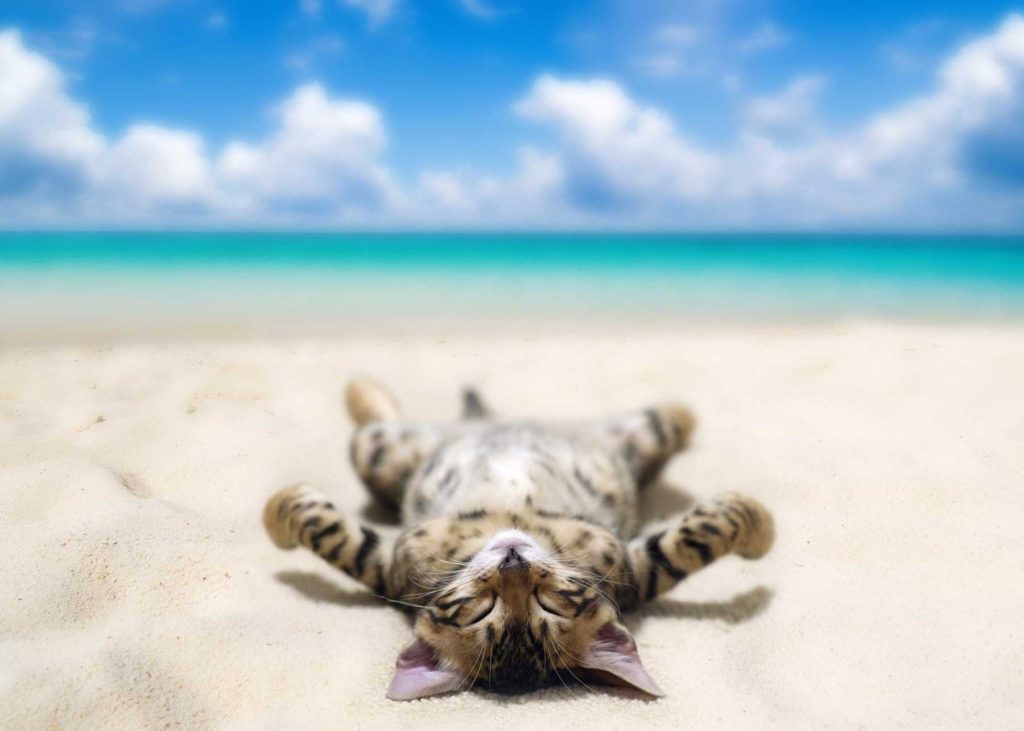Feral Cats: Myth vs. Reality
According to recent media reports, feral cats reduce songbird populations. Is this true- or are we missing the BIG picture?
Question: Are feral cats responsible for the decline of songbirds in Brevard County?
Answer: No. The decline in songbird populations is caused by loss of habitat. In the past two decades, a massive increase in construction has swept Brevard County, resulting in dramatic decreases in wooded and scrub areas. Birds need these wild places for nesting territory. The simple truth is, when nesting territory disappears, so do birds. Unfortunately, loss of habitat is occurring all over the US, as well as Central and South America, where migratory birds make their winter homes.
Question: Since feral cats are predators, don’t they eat millions of endangered birds every year?
Answer: No. Studies show that feral cats eat more insects and small mammals, such as rats and mice, than birds. They catch the old, sick, and weak of any species they hunt, which can include some that are endangered, but includes just as many- if not more- which are not.
Question: Are feral cats taking resources away from native Florida wildlife?
Answer: No. Feral cats are becoming more visible because their wooded habitat is being destroyed. Birds can fly away to other locations but cats cannot. Consequently, cats congregate near restaurants and parks- anywhere people have leftover food and garbage. Ironically, the effort to eradicate non-native Brazilian peppers in Brevard County has resulted in fewer native birds. The berries of this plant provide food, and when it’s removed, the birds move on.
Question: I’ve heard the feral cat population in Brevard County has doubled. Doesn’t this prove that county-funded spay/neuter clinics don’t work?
Answer: No. There has never been an official count of the number of feral cats in the county- just estimates of anywhere from 25,000 to 200,000. What can be accurately counted, though, are the 5,000 feral cats spayed or neutered over the past 4 years through Trap-Neuter-Return programs (TNR), supported by private donations as well as county funding. That makes 5,000 cats that will not contribute to population increase. Studies support this fact: TNR programs prevent breeding, which allows populations to decrease by attrition. Increases are caused by irresponsible pet-owners who abandon cats to fend for themselves, which is an ongoing problem.
Question: Should all cats be kept indoors?
Answer: No. Responsible cat-owners know the safest place for their pet is indoors, away from traffic and other animals. But feral cats are not pets- they are wild. Some can be adopted if socialized early in life, but very few adults can ever be tamed.
Question: Why aren’t feral cats moved to sanctuaries to isolate them from wildlife?
Answer: Animals living in shelters or sanctuaries require daily care, which is costly. This is why thousands of adoptable cats and dogs are euthanized every year in Brevard County. A local animal-rescue group, which built a sanctuary to house 80 to 100 feral cats, reports their cost for building a fenced-in, barn-like structure to be $150 per cat. This does not include the cost of the land, donations of materials, volunteer builders, volunteer caretakers, or the cost of food and litter. The cost of TNR programs, at about $30 per cat, is significantly less.
Question: Aren’t feral cats primary carriers of rabies?
Answer: No. Dogs and raccoons are much more likely to carry rabies. Feral cats are shy and hide from people. You are more at risk of contracting rabies from domesticated cats, which readily interact with people, or from free-roaming packs of dogs.
Bottom Line: Birds are killed by destruction of habitat and millions of pounds of pesticides every year, but no one wants to stop development or see our lawns and golf courses devoured by insects. Birds die when they fly into communication towers, but we don’t want to give up our cell phones. Raptors prey on songbirds, but no one suggests killing hawks and eagles. Why must feral cats take all the blame?
Space Coast Feline Network advocates a strong Trap-Neuter-Return (TNR) program as a humane, cost-effective solution for controlling the feral cat population in Brevard County.
Contact our helpline at (321)-631-SPAY for more information!
Thank you for helping the kitties!


